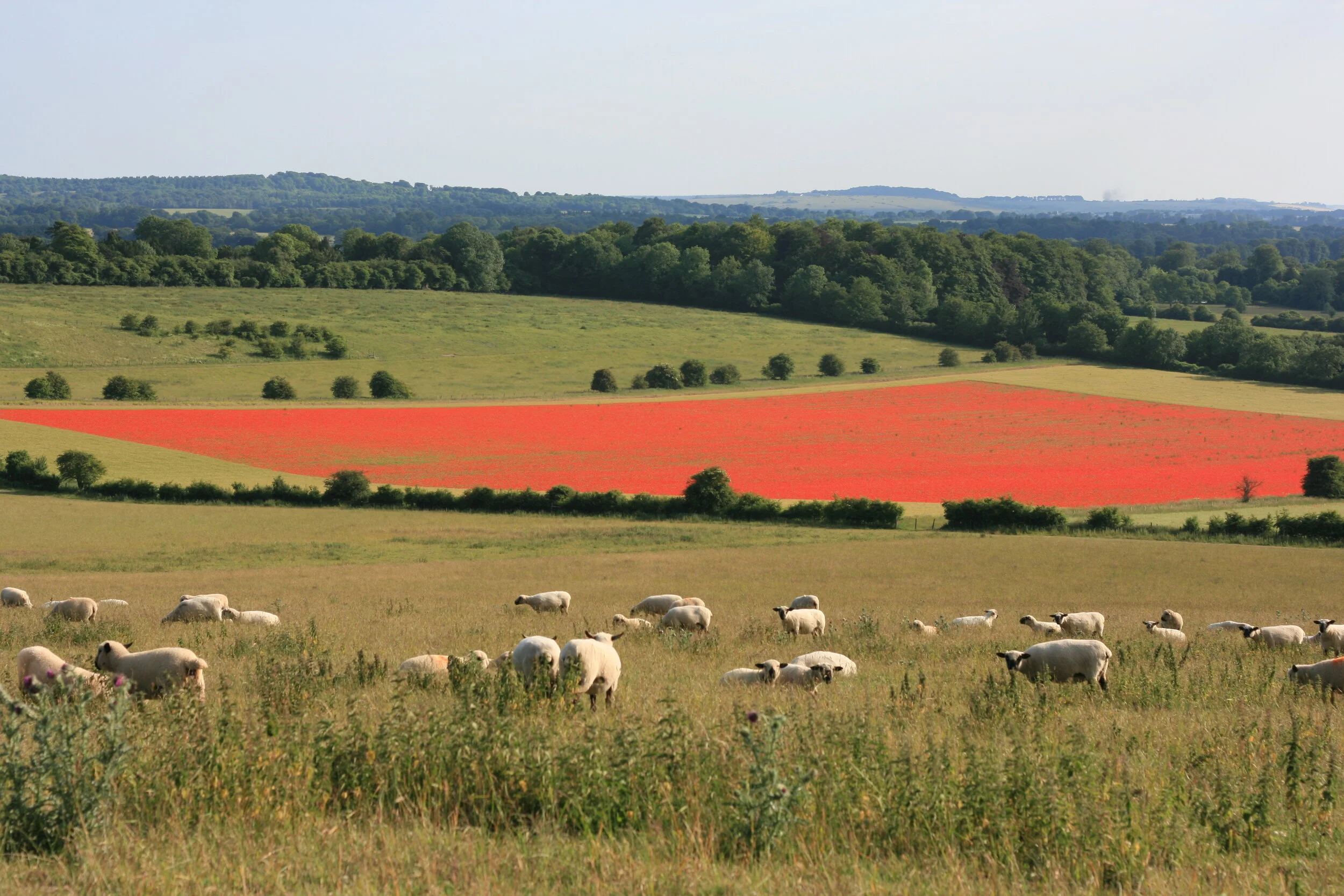
Finalist: Achieving Net Zero
Producing food on chalk soil without damaging the environment
Hampshire, UK
The Challenge
The UK government has set a target to produce net zero emissions by 2050. British farms currently emit around a tenth of the UK’s greenhouse gas emissions, which all contribute to global warming. Around 10% is carbon dioxide, 40% is nitrous dioxide and 50% is methane. Not only do they need to reduce their emissions to net zero, but farms can also play an important role in capturing carbon and producing food in a way that does not release any additional greenhouse gases. Specifically, 80% of farms on chalk soils run an intensive arable system on the same soil, and use pesticides. These pollute groundwater and release nitrous oxide. And cattle emit methane when they digest feed which has been grown with fertiliser.
The Innovative Project
The UK’s Department of Environment, Food and Rural Affairs (DEFRA) is developing the new Environmental Land Management system which will replace the Common Agricultural Policy in 2024. They wanted to demonstrate that it is possible to produce adequate quantities of good food on chalk soil and meet climate change objectives. They brought together partners to analyse the practice at the Cholderton Estate in Hampshire, an organic farm that grows long-pasture arable crops on chalk soil to increase biodiversity and trap carbon, and then uses it as a feed for their livestock.
Cholderton Estate operates a ten year rotation cycle of four years arable and feed with the next six years of mixed extensive grazing. Thick hedges and woodlands surrounding its fields sequestrate carbon. The fields have a wide variety of pasture-based herb and grass mixes that turn airborne nitrogen into nitrates which benefit the crops. The mattress of roots promotes active microbial health, raising the natural fertility, releasing nutrients, increasing the holding capacity of water and trapping carbon in the soil.
No inorganic nitrogenous fertilizers or any pesticides are used which reduces the need to plough the land. The result is that no nitrous oxide is emitted, no groundwater is polluted, carbon is sequestered in a way that secures fertility and makes Cholderton one of the richest estates for biodiversity in the country. The Cholderton Estate provides evidence that food production can be delivered sustainably.
The Partnership
Multiple partners have helped analyse the farming system at Cholderton Estate:
-
Cranfield University has validated the soil management approach that has transformed a relatively infertile soil base to a highly productive fertile soil.
-
The Wildlife Trust has confirmed that the estate is one of the richest estates in the country for biodiversity.
-
The company eftec (a partner) has produced a Natural Capital Account of the estate that demonstrates that the estate is having to compete with other farms where the unintended consequences are not being accounted for. It has also confirmed the estate's sustainability status.
-
The Forestry Commission has accounted for the carbon sequestration locked up in trees and woodland and encouraged more tree and woodland planting.
-
The County Council has demonstrated how modernising access to the estate can improve the health and wellbeing of local people.
-
The NRM Laboratory has measured organic matter of soils from both farms and assessed carbon capture. Terra Firma has brought its design and graphic skills to this presentation.
-
Natural England has delivered financial and advice support over many years to help Henry Edmunds - the owner occupier - to deliver the outcomes.
-
Pasture Promise CIC have brought its publishing and film making skills to produce the film for the farming community
The Impact
Chalk soils are very porous and fragile, covering 80,000 hectares in Southern England. If all farms on chalk soils sequestrated the same amount of carbon as the Cholderton estate 10 million tons of carbon could be captured by soil alone, double the current holding. If all chalk based estates fixed nitrogen through crop management rather than applying nitrates, 380,000 tons of carbon dioxide equivalent would not be emitted.
In addition, the use of Hampshire Sanfoin in the grazing pasture at Cholderton also reduces methane emissions from animals by 15% compared to grass fed cattle. This could be adopted on other chalk soil farms that have livestock.


